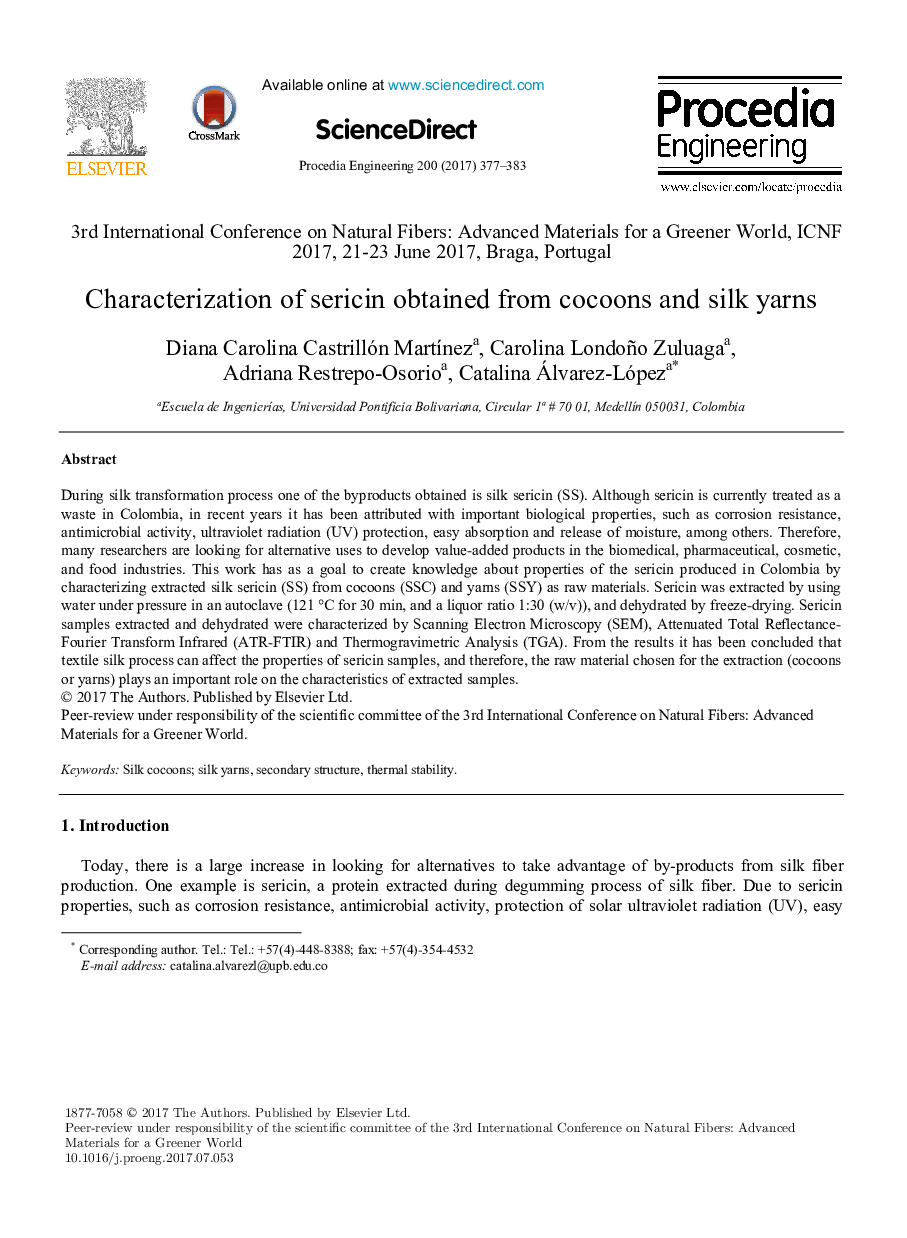| Article ID | Journal | Published Year | Pages | File Type |
|---|---|---|---|---|
| 5026714 | Procedia Engineering | 2017 | 7 Pages |
During silk transformation process one of the byproducts obtained is silk sericin (SS). Although sericin is currently treated as a waste in Colombia, in recent years it has been attributed with important biological properties, such as corrosion resistance, antimicrobial activity, ultraviolet radiation (UV) protection, easy absorption and release of moisture, among others. Therefore, many researchers are looking for alternative uses to develop value-added products in the biomedical, pharmaceutical, cosmetic, and food industries. This work has as a goal to create knowledge about properties of the sericin produced in Colombia by characterizing extracted silk sericin (SS) from cocoons (SSC) and yarns (SSY) as raw materials. Sericin was extracted by using water under pressure in an autoclave (121 °C for 30 min, and a liquor ratio 1:30 (w/v)), and dehydrated by freeze-drying. Sericin samples extracted and dehydrated were characterized by Scanning Electron Microscopy (SEM), Attenuated Total Reflectance-Fourier Transform Infrared (ATR-FTIR) and Thermogravimetric Analysis (TGA). From the results it has been concluded that textile silk process can affect the properties of sericin samples, and therefore, the raw material chosen for the extraction (cocoons or yarns) plays an important role on the characteristics of extracted samples.
